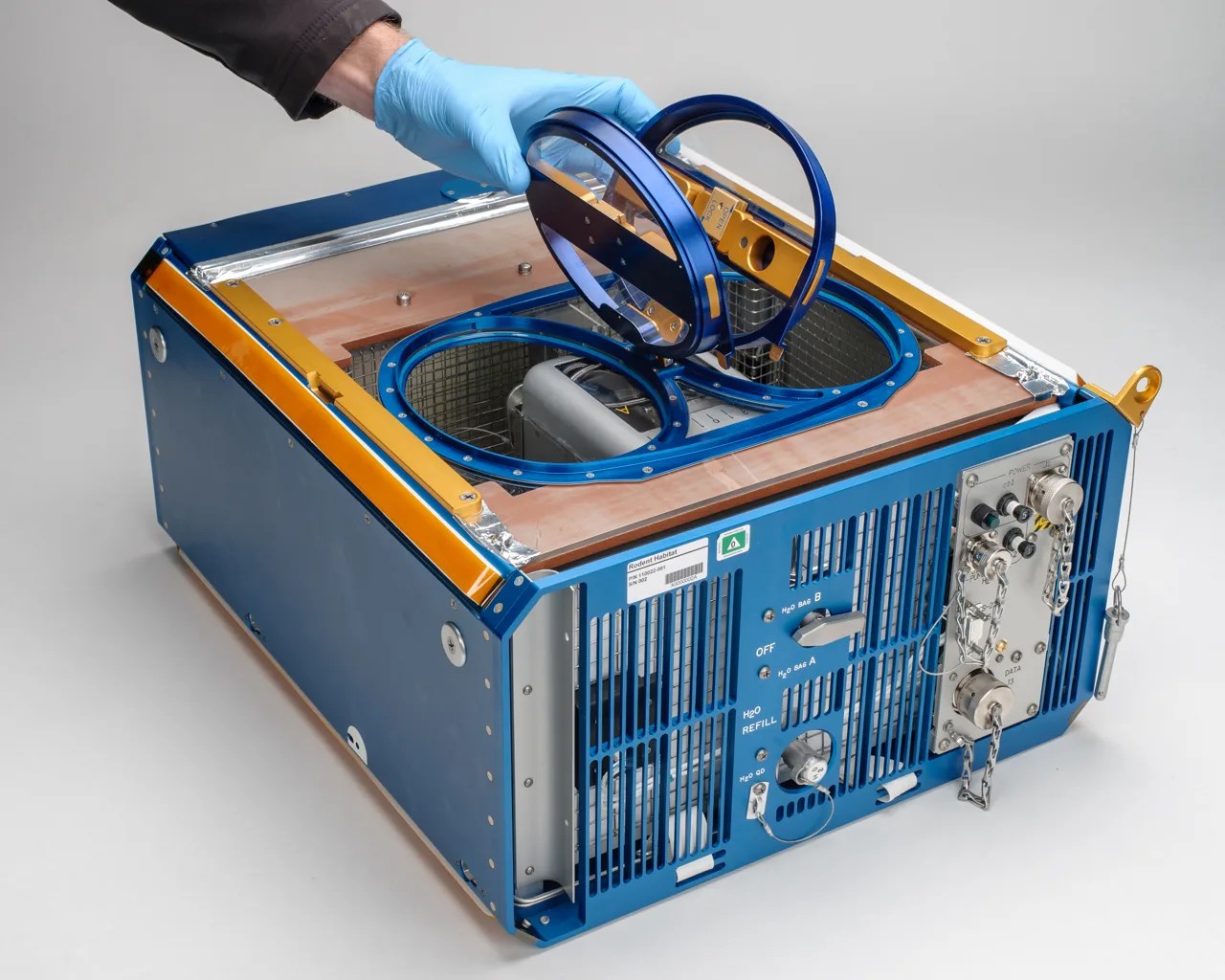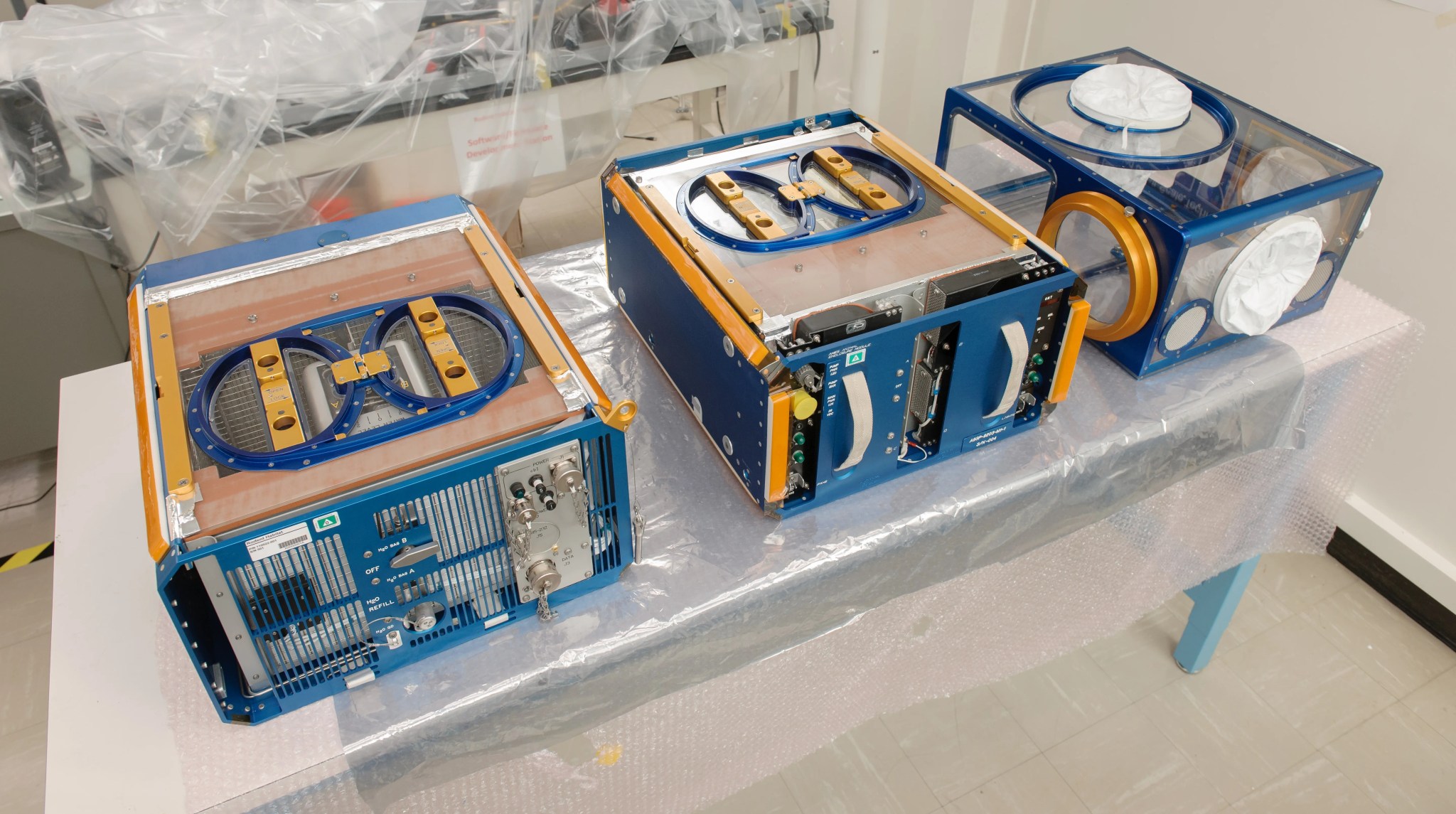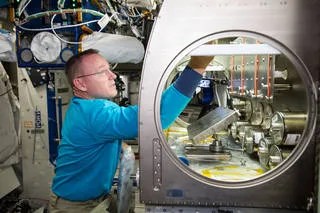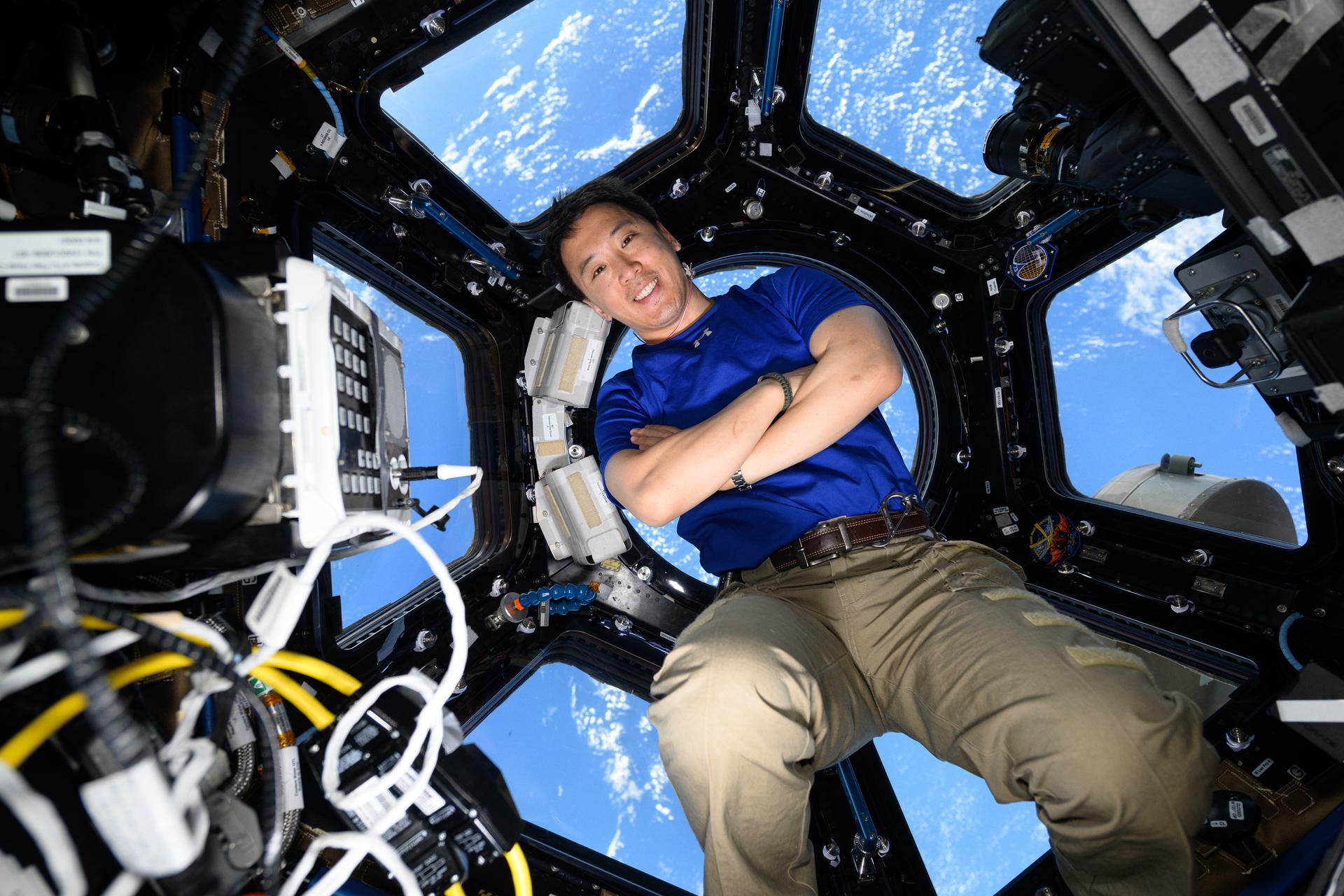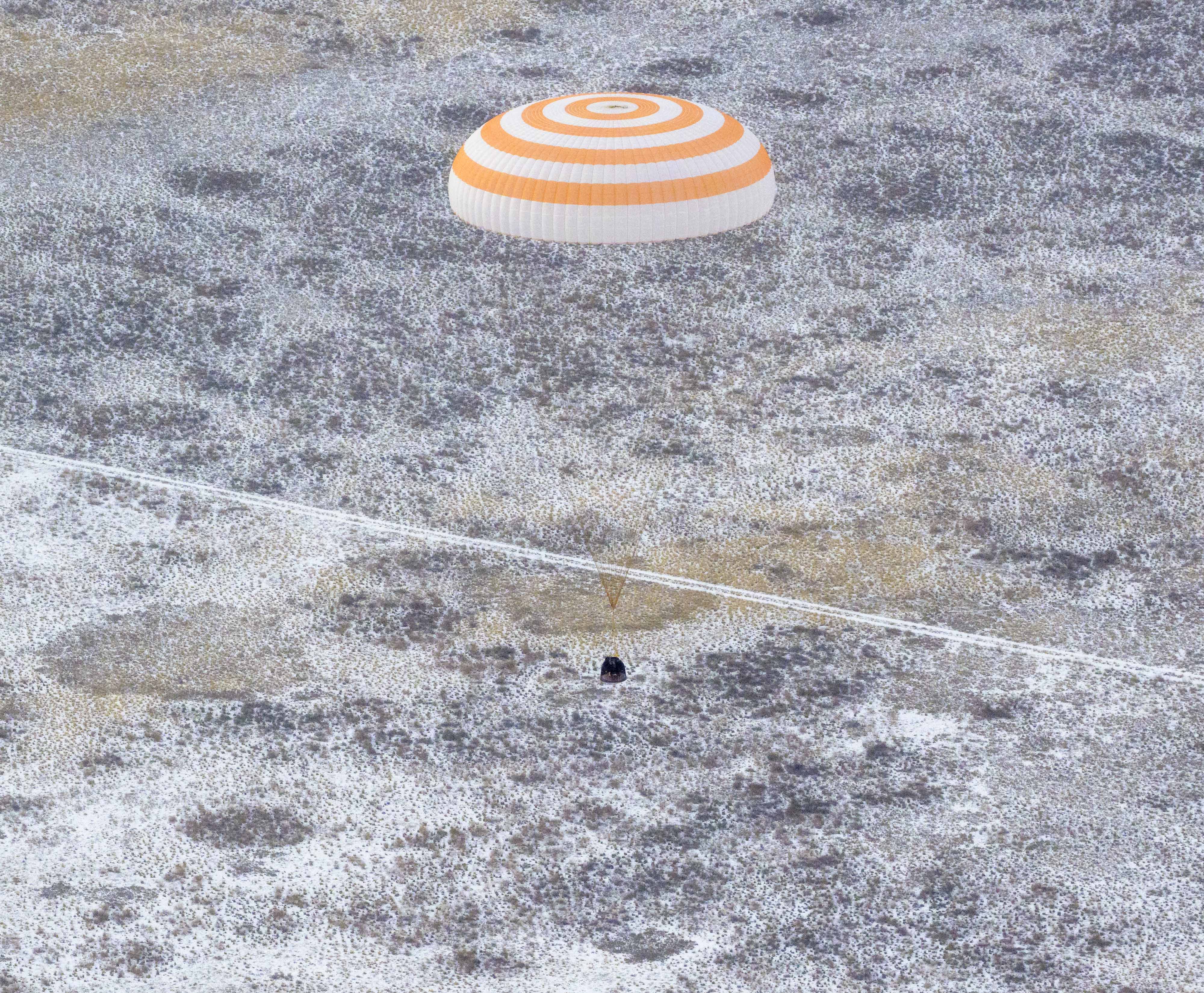Rodent Research

For Human Health, in Space and on Earth
In space, far from the strong tug of Earth’s gravity, astronauts experience a number of changes that could affect their health. Understanding these effects of weightlessness, as well as how to treat them, will be vital to a successful future for humans in space.
Since the environment of space alters multiple, interacting biological systems – including bones, muscles, the heart, blood flow, and the immune system – sometimes it is better to study everything at once in the entire organism. This can be achieved by working with research model organisms, such as mice and other rodents. Given their genetic similarity to humans, studying mice allows scientists to gain insight into the workings of the human body. The rodents’ faster development and shorter life span reveal effects of microgravity on a shorter timescale, and the chance to fly dozens of small rodents on each mission yields much more data from which to draw scientific conclusions.
To help answer fundamental questions about human health – both for Earth and in space – NASA’s Ames Research Center, in California’s Silicon Valley, developed the Rodent Research Hardware System. Making use of its equipment and protocols, scientists are able to partner with NASA to conduct a variety of experiments in the unique laboratory of the International Space Station, without the need to develop and test a new system for each mission.
The Ames team built the new system based upon their decades-long experience of conducting rodent research aboard the space shuttle. Today’s system makes longer-term basic and applied research possible in space.
How Does It Work?
The three major components of the Rodent Research Hardware System are used for different stages of the mission. The animals make the trip to and from the space station in the transporter. Upon arrival, the animal access unit allows the astronaut crew to transfer them safely into the third module, the habitat unit, which provides long-term housing for the rodents.
The experiments that take place on the space station examine how microgravity affects the animals and provide information relevant to human spaceflight, through discoveries in basic biology and new knowledge that can help treat human diseases on Earth. Working together, NASA and the Center for the Advancement of Science in Space, or CASIS, selected and prepared spaceflight experiments, led by principal investigators from institutions around the U.S., using the rodent research hardware system.
To maximize the knowledge gained from these missions, unused tissue samples from the experiments will be shared with additional researchers who will use them for even more studies. Data from the spaceflight investigation will also be made available to the public via NASA’s GeneLab data system. The GeneLab data system is a collaborative workspace and set of tools to analyze huge amounts of space biology data, which allows the opportunities for discovery to be multiplied many fold.
Rodent Research-1
This important first mission in NASA’s rodent research project launched in 2014. It proved that the hardware system was effective and safe to use in space, and that critical research operations could be carried out by the space station crew. This first study showed that mice transported on the SpaceX Dragon capsule, then living in the habitat on the space station for a month, were both healthy and active. Rodent Research-1 also included a CASIS commercial research investigation dedicated to the study of muscle loss, or atrophy.
Learn more:
- NASA story: NASA's New Rodent Residence Elevates Research To Greater Heights
- NASA story: NASA Completes Rodent Research-1 Operations on the International Space Station
For researchers:
- NASA Ames Space Biosciences division's technical experiment page
- International Space Station technical experiment page
Rodent Research-2
The primary objective of RR-2, launched in 2015, was to examine the effects of the space environment on the musculoskeletal and neurological systems of mice as model organisms of human health and disease. This project may help scientists discover ways that therapies could act on muscle- and bone-related diseases, which could facilitate the development of new treatments.
For researchers:
- NASA Ames Space Biosciences division's technical experiment page
- International Space Station technical experiment page
Rodent Research-3
For the third mission, launched in 2016, CASIS formed a commercial partnership with the pharmaceutical company Eli Lilly and Company, of Indianapolis, Indiana. Their goal was to evaluate a potential new treatment for skeletal muscle wasting and weakness. Working with NASA, the researchers assessed its ability to prevent these conditions in mice exposed to long-duration spaceflight. Rodent research models have made it possible to study serious diseases involving muscle atrophy, and even age-related weakness. Conducting this study during spaceflight provided the researchers with the rare opportunity to expose all the muscles of an organism to conditions that will produce atrophy – something not easily achieved on Earth.
Learn more:
For researchers:
- NASA Ames Space Biosciences division's technical experiment page
- International Space Station technical experiment page
Rodent Research-4
The fourth mission to use NASA’s facility for conducting rodent research aboard the International Space Station launched in April 2017 and focused on bones: how they grow and heal, and what effect microgravity has on these processes. The results will have applications for astronauts and future space travelers, as well as for patients with severe injuries here on Earth.
For researchers:
Rodent Research-5
The topic of study on this mission was bone tissue loss – a challenge for the health of astronauts, as well as for people on Earth suffering from osteoporosis. For the experiment, a group of mice was launched to the space station in June 2017. Half of them returned to Earth one month later, while the other half remained in space for a full two months. This allowed the researchers – a team based at University of California, Los Angeles – to study the effects of a potential treatment for bone loss, and how the body readapts to Earth conditions after an extended stay in microgravity.
For researchers:
Rodent Research-9
For Rodent Research-9*, NASA’s rodent research science team, based at NASA Ames, selected three studies directly in support of NASA exploration science goals, with complementary objectives allowing them to share a single mission. Examining the effects of microgravity on blood vessels in the brain and eye, and on cartilage loss in joints, this mission marks a return to fundamental space research that paves the way for applied studies on later missions. The results could improve understanding of vision loss and eye disorders, and of the way arthritis develops in patients whose mobility is impaired.
* A shift in the order of experiments scheduled to fly to the International Space Station resulted in RR-9 following directly on RR-5.
Learn more:
- NASA story: Rodents Help NASA Take the Next Step to Mars
For researchers:
- NASA Ames Space Biosciences division's technical experiment page
- International Space Station technical experiment page
Rodent Research-6
The topic of muscle wasting, or atrophy, was studied in Rodent Research-6. This is a problem for astronauts, brought on by microgravity, and also for many patients on Earth in different situations of disease or limited exercise. Working with NASA and CASIS, researchers from the pharmaceutical company Novartis, NanoMedical Systems and Houston Methodist Research Institute evaluated a new system for administering a drug that might be able to counteract this effect. A tiny chip, implanted under the skin, delivers a constant, low dose of the drug being tested, helping also to avoid the known side effects of its long-term use at high doses.
For researchers:
- NASA Ames Space Biosciences division's technical experiment page
- International Space Station technical experiment page
Rodent Research-7
Whole communities of microorganisms live on and in our bodies, and they play an important role in human health. Known collectively as the microbiome, these communities are likely to be affected by the unique conditions of space, including microgravity. Rodent Research-7 looked at how the reduced-gravity environment of the International Space Station affects the community of microorganisms in the gut and what impact this has on multiple systems in the body. The results will show scientists how they might create solutions to keep astronauts safe and healthy on long-duration spaceflight missions and improve the treatment of gastrointestinal, immune, metabolic and sleep disorders on Earth.
For researchers:
- NASA Ames Space Biosciences division's technical experiment page
- International Space Station technical experiment page
Rodent Research-14
Rodent Research-14 will study how microgravity affects the biological circadian rhythm – the body’s internal clock – and the tissues of key organs, including the colon, heart, lung, liver, kidney and hypothalamus. This investigation also advances research on the most common liver disease in humans, which recent discoveries have shown is connected to the body’s daily clock program.
For researchers:
Rodent Research-10
Healthy bones rely on a process in which bone tissue is continuously broken down and built back up. Rodent Research-10 investigated the biological mechanisms underlying deficits in bone regeneration caused by disuse on Earth and microgravity during spaceflight – an important health risk for astronauts. Better understanding of a gene thought to “put the brakes on” bone tissue repair – called Cdkn1a – may become the basis for designing new treatments to counter tissue degeneration in space and lead to novel therapeutic strategies to address degenerative bone conditions on Earth.
For researchers:
- NASA Ames Space Biosciences division's technical experiment page about Rodent Research-10
- International Space Station technical experiment page about Rodent Research-10
Rodent Research-23
Some astronauts on long-duration missions experience physical changes to the eyes that lead to the need for glasses. Rodent Research-23 studied the effects of spaceflight, specifically on the structure and function of the arteries, veins, and lymphatic vessels needed to maintain vision. The information gathered from this study will help scientists develop effective countermeasures to protect future astronauts from spaceflight-associated eye conditions and may shed light on eye diseases in people on Earth.
For researchers:
- NASA Ames Space Biosciences division's technical experiment page about Rodent Research-23
- International Space Station technical experiment page about Rodent Research-23
Rodent Research-18
Astronauts can experience eye problems after returning from space, along with headaches and blurred vision. Rodent Research-18 investigates how spaceflight affects visual function, examining changes in the vascular system of the retina and the ways specific cells interact. A better understanding of the process and biological mechanisms behind these effects could support development of more effective countermeasures. This mission will specifically test metalloporphyrin, an antioxidant that may protect against the irreversible oxidative damage observed in eye structure and function during and after spaceflight. This investigation could also lead to new therapies for neurovascular-related eye diseases and retinal degeneration in people on Earth.
For researchers:
For news media:
Members of the news media interested in covering this topic should reach out to the NASA Ames newsroom.

























